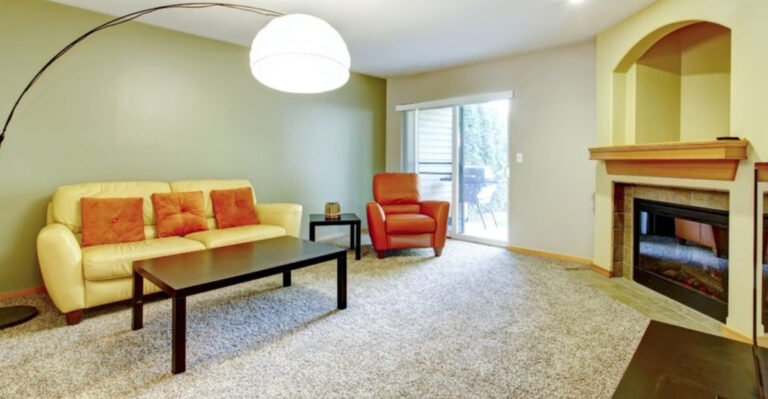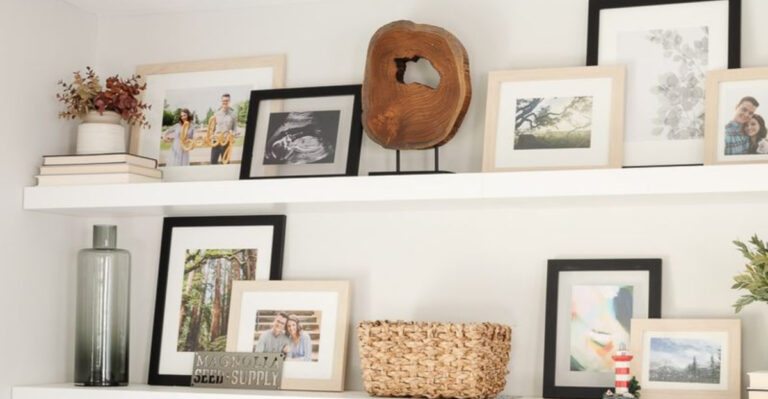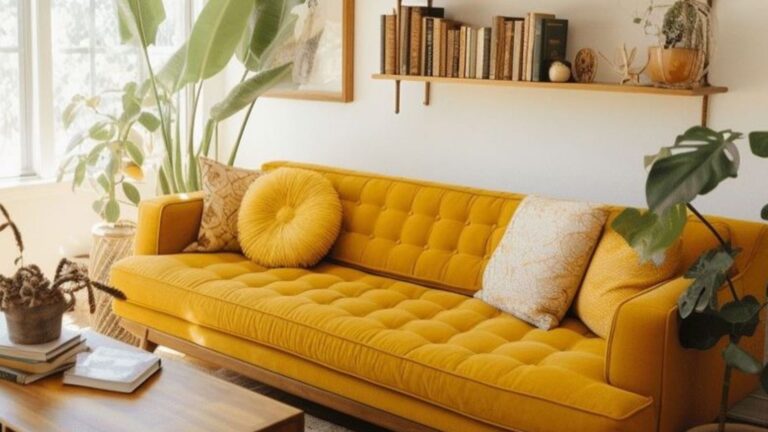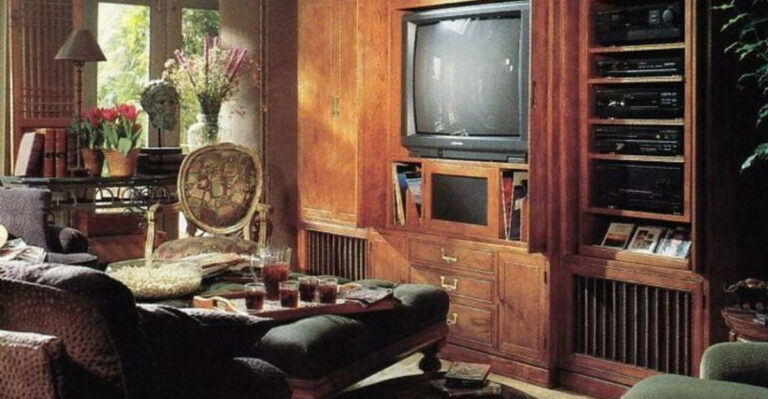20 Ways High-End Designers Properly Light A Living Room
I’ve learned firsthand that lighting can truly make or break a living room’s vibe. Even the most gorgeous furniture looks flat and lifeless under poor lighting.
But when you get it right, good lighting works like magic, it adds warmth, highlights your favorite pieces, and somehow makes everyone feel more at home.
Professional designers have some brilliant secrets up their sleeves for creating that perfect glow, and I’m excited to share those tips with you. If you want your living space to feel inviting and stunning, here are the lighting tricks that really make a difference.
1. Layer Different Types Of Light Sources
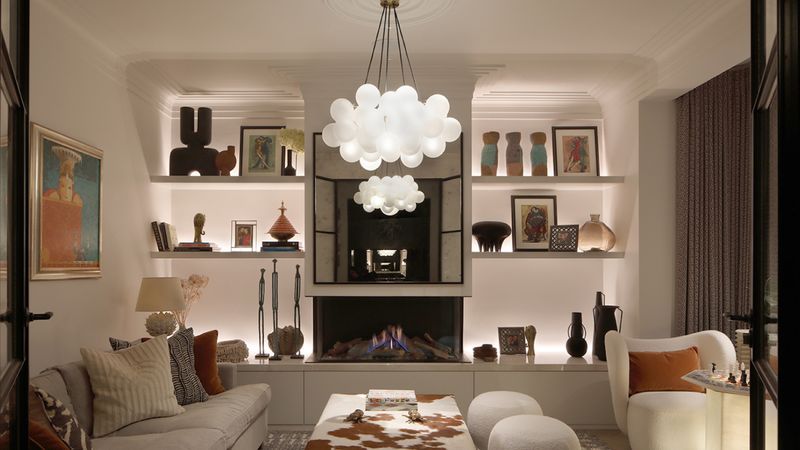
If you want your living room to look professionally designed, forget about using just one overhead light. Top designers always combine three types of lighting: ambient for overall brightness, task lighting for reading or working, and accent lights to highlight artwork or plants.
How does this magic work? Each layer serves a different purpose and creates depth in your space. Sometimes the overhead light provides general illumination while table lamps add cozy spots for activities.
2. Install Dimmer Switches For Ultimate Control
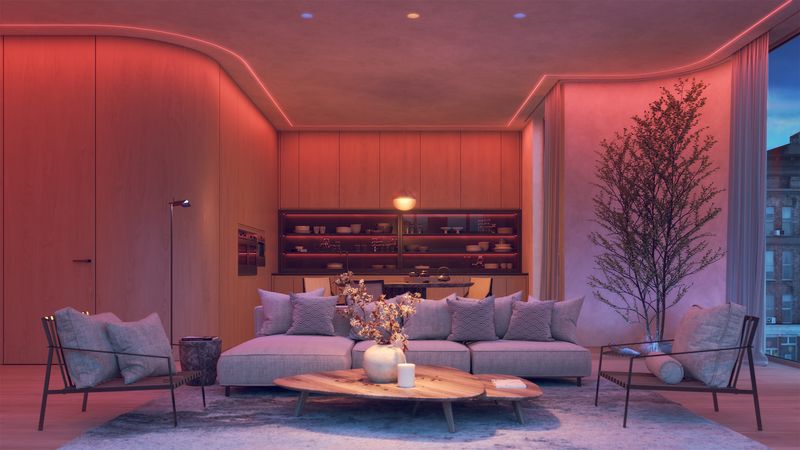
Though it might seem like a small detail, dimmer switches are a designer’s secret weapon for creating the perfect mood. Bright lights work great for cleaning or playing games, but you’ll want softer lighting for movies or romantic dinners.
Where should you install them? Put dimmers on overhead lights, wall sconces, and even some floor lamps. This simple upgrade lets you adjust the brightness throughout the day without changing a single bulb.
3. Position Floor Lamps In Room Corners
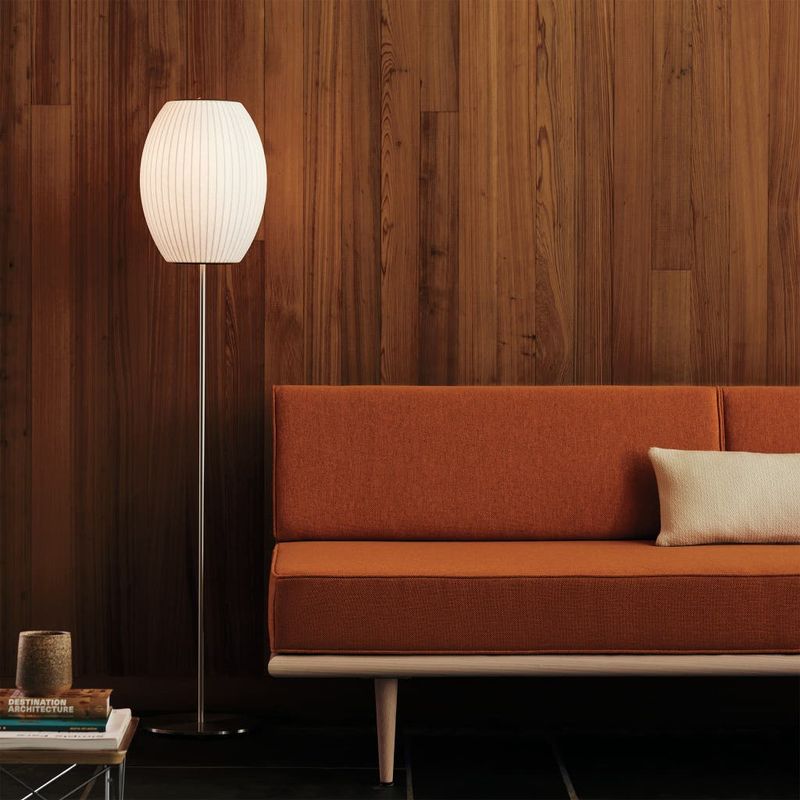
Corner placement might sound boring, but it’s actually brilliant for creating even light distribution. Floor lamps tucked into corners bounce light off two walls at once, which eliminates harsh shadows and makes your room feel bigger.
Why do professionals love this trick? Corner lighting creates what designers call “ambient wash” – a gentle glow that makes everything look more inviting. Plus, corners are usually empty anyway, so you’re using dead space effectively.
4. Use Table Lamps At Eye Level When Seated
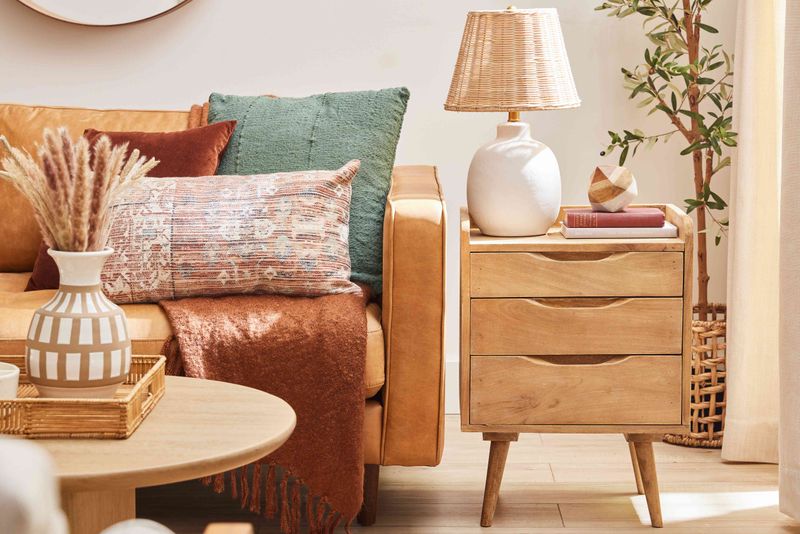
Ever wonder why some rooms feel comfortable while others strain your eyes? Professional designers always position table lamps so the bottom of the lampshade sits at eye level when you’re sitting down.
This height prevents glare from hitting your eyes directly while still providing enough light for reading or conversation. If your lamp is too high, you’ll get harsh shadows. Too low, and you won’t have enough illumination for tasks.
5. Highlight Artwork With Picture Lights
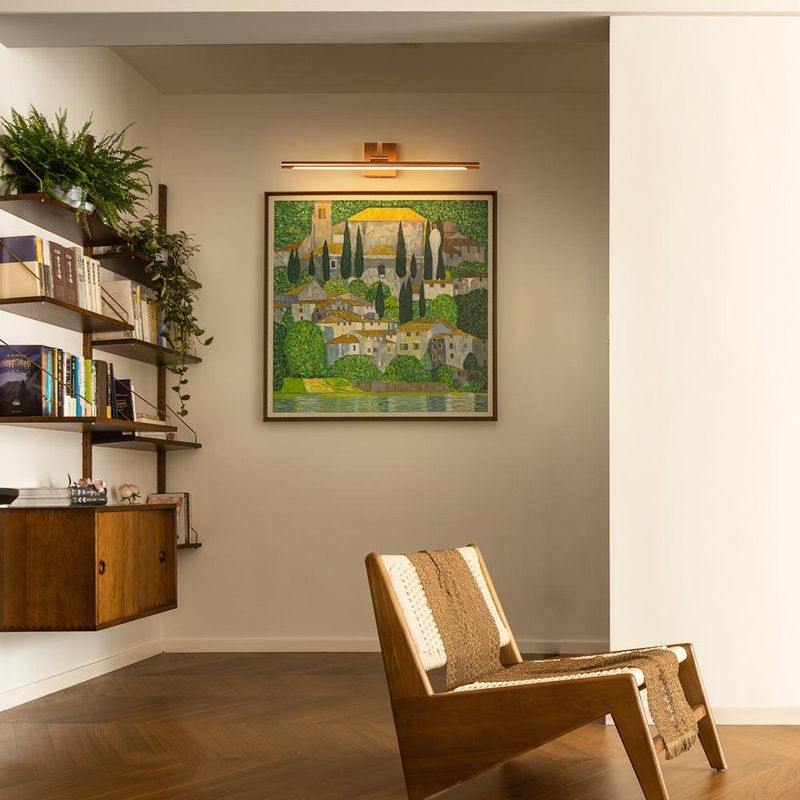
Sometimes the most expensive painting looks cheap because it’s poorly lit. Picture lights mounted directly above or below artwork create dramatic focal points that make your walls look like a gallery.
How bright should they be? The light should be about three times brighter than the surrounding room lighting. This creates enough contrast to make your artwork pop without overwhelming the space or creating annoying reflections on glass frames.
6. Create Pools Of Light Instead Of Even Brightness

Flat, even lighting makes rooms feel like doctor’s offices rather than cozy homes. Smart designers create “pools” of light – brighter spots where people gather and dimmer areas that add mystery and depth.
Where should these pools go? Focus brighter lighting around seating areas, reading nooks, and conversation spaces. Let other areas fade into softer shadows. This technique makes rooms feel more intimate and visually interesting than uniform brightness everywhere.
7. Choose Warm Light Bulbs For Cozy Atmosphere
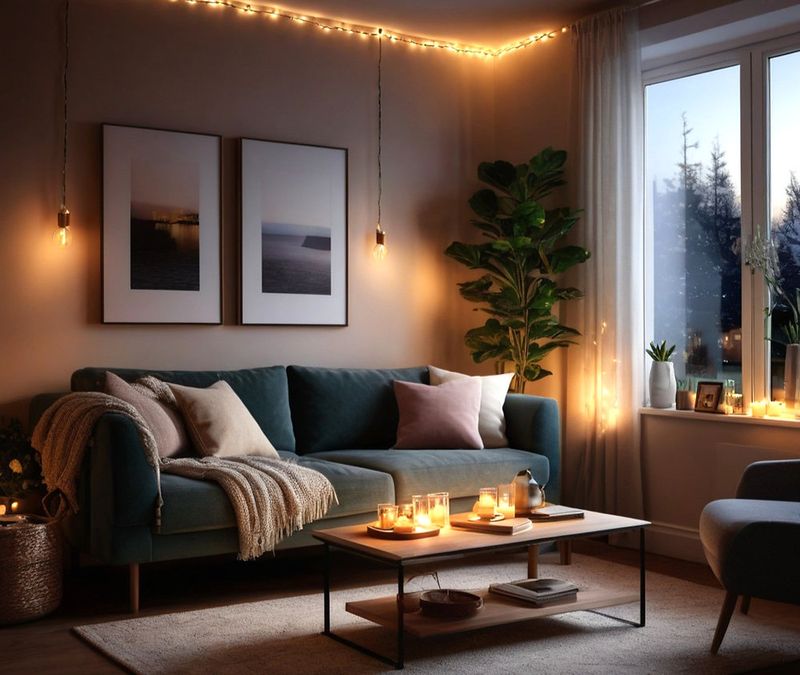
Cool white bulbs might work in offices, but they’ll make your living room feel cold and unwelcoming. Professional designers stick with warm white bulbs (2700K-3000K) that create the same cozy glow as candlelight.
Why does color temperature matter so much? Warm light makes skin tones look healthy, wood furniture appear rich, and fabrics seem more luxurious. Cool light does the opposite, making everything look harsh and institutional. Your guests will feel more relaxed under warm lighting.
8. Install Sconces To Free Up Table Space
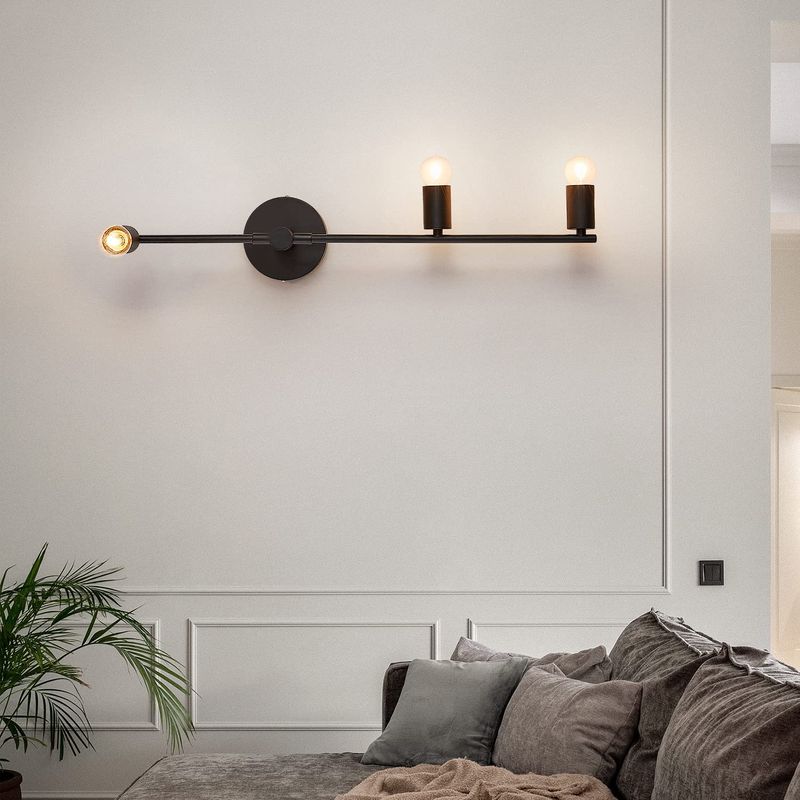
Wall sconces are like jewelry for your walls – they add style while solving practical problems. Instead of cluttering side tables with lamps, sconces provide light from the walls and leave surfaces free for drinks, books, or decorative objects.
Where should you mount them? Install sconces about 60-66 inches from the floor, roughly at eye level when standing. This height provides good illumination without creating glare. Swing-arm versions are perfect next to reading chairs.
9. Add Under-Cabinet Lighting For Built-Ins
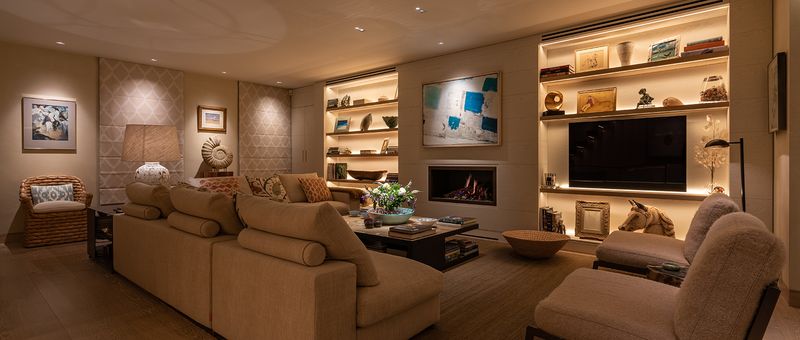
Built-in bookcases and entertainment centers look much more expensive when they’re properly lit from within. LED strip lights hidden under shelves create a warm glow that highlights your books, collectibles, or media equipment.
How do you hide the light source? The key is positioning strips where they can’t be seen directly. Mount them under the front edge of each shelf, pointing downward. This creates beautiful accent lighting that makes your built-ins look like custom millwork.
10. Use Uplighting To Make Ceilings Look Higher

Low ceilings got you down? Uplighting is a designer trick that makes any room feel taller and more spacious. Floor lamps or wall sconces that shine light upward create the illusion of height by drawing your eye toward the ceiling.
Which fixtures work best for this? Torchiere floor lamps are perfect for uplighting, as are wall sconces with upward-facing shades. The light bounces off the ceiling and creates a soft, indirect glow that makes the room feel bigger and more open.
11. Balance Light Sources Throughout The Space
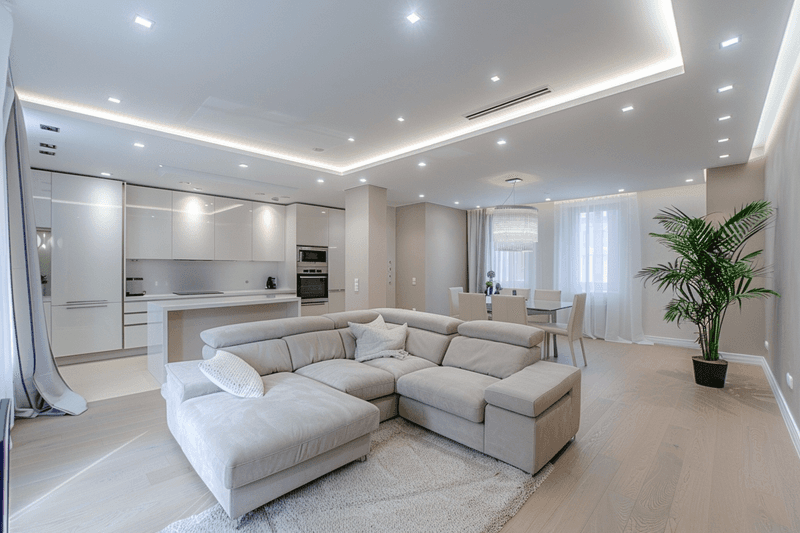
Professional designers never put all their lights on one side of the room. Instead, they distribute light sources evenly to create visual balance and prevent dark corners that make spaces feel smaller.
How many light sources do you need? A good rule is to have at least one light source in each quadrant of your living room. This might include a combination of overhead lights, table lamps, floor lamps, and sconces. The goal is creating harmony rather than having one super-bright area.
12. Install Pendant Lights Over Seating Areas
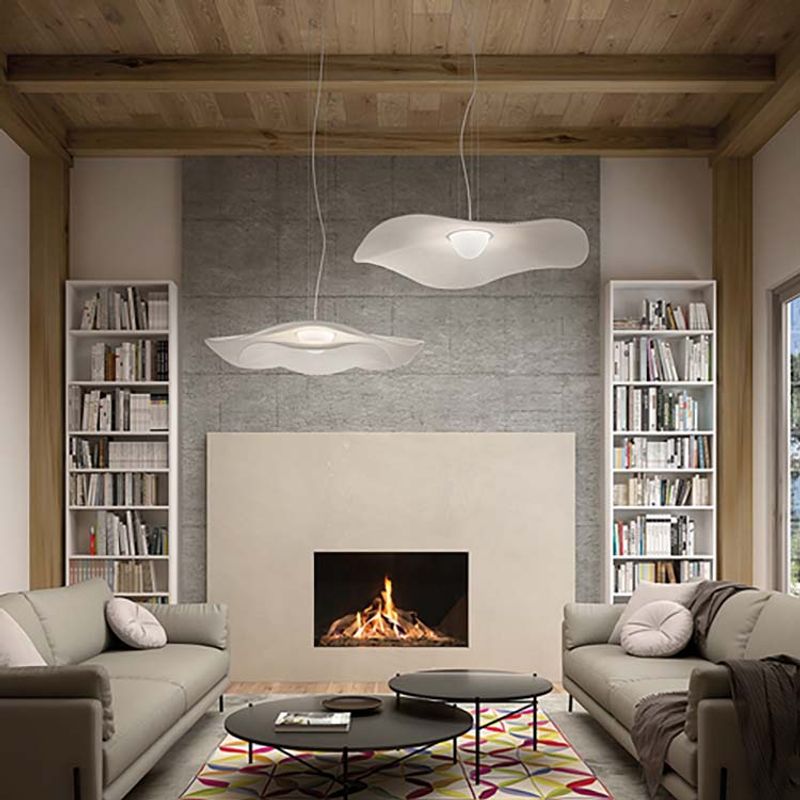
Pendant lights aren’t just for kitchens anymore. Designers love hanging them over conversation areas or reading nooks to create intimate spaces within larger rooms. They provide focused light exactly where you need it most.
What’s the right height? Hang pendants about 30-36 inches above coffee tables or 60-66 inches from the floor over seating areas. This provides good task lighting without blocking sight lines across the room. Choose styles that complement your existing decor for a cohesive look.
13. Use Mirrors To Reflect And Amplify Light

Mirrors are a designer’s best friend for making rooms brighter without adding more fixtures. Strategically placed mirrors reflect existing light sources and bounce illumination into darker corners of your living room.
Where should you position them? Place mirrors opposite windows to reflect natural light, or across from lamps to double their impact. Large mirrors work best for this purpose, but even smaller ones can help distribute light more evenly throughout your space.
14. Choose Lampshades That Complement Your Goals
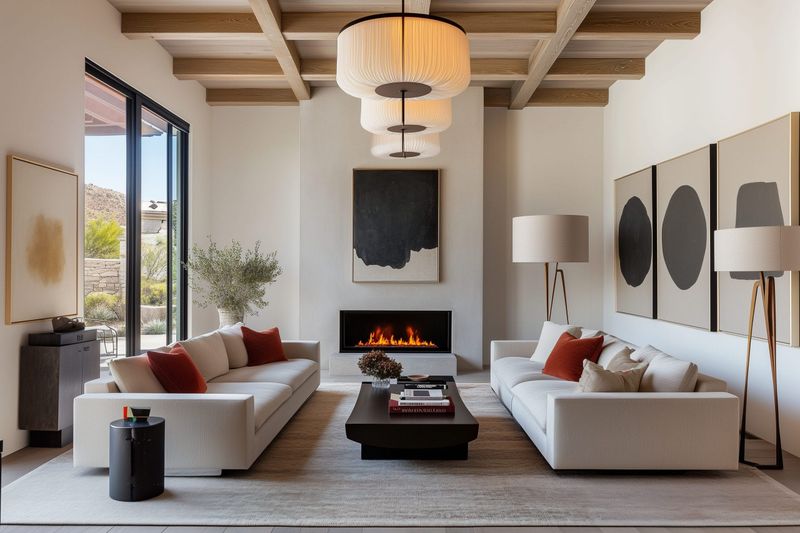
Lampshade selection can make or break your lighting scheme. Light-colored, translucent shades spread soft, diffused light throughout the room, while dark or opaque shades direct light up and down for more dramatic effects.
Which type should you choose? For general ambient lighting, go with white or cream fabric shades that glow softly. For task lighting, choose shades that direct light downward onto work surfaces. Metal or dark shades create more focused, dramatic lighting perfect for accent purposes.
15. Install Cove Lighting For Dramatic Effect
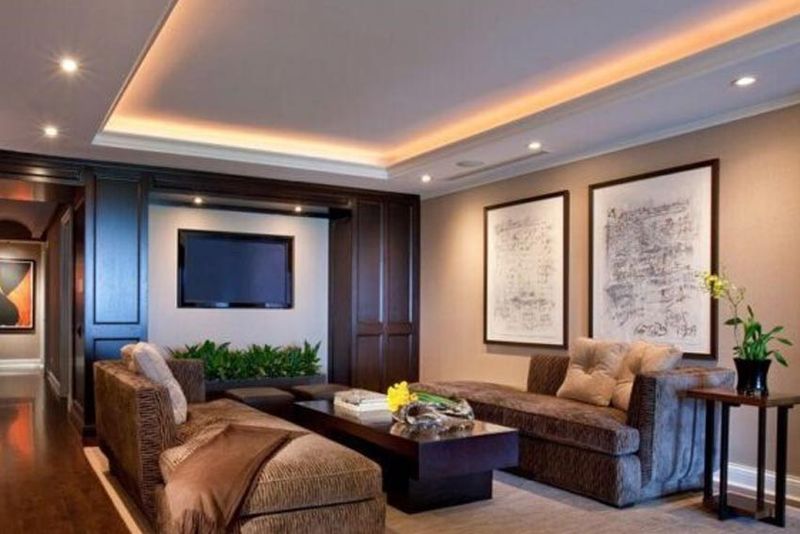
Cove lighting is the secret weapon that makes high-end homes look so polished. Hidden LED strips in ceiling recesses or behind crown molding create a soft, indirect glow that makes rooms feel luxurious and spa-like.
Why does this technique work so well? The hidden light source eliminates glare while providing beautiful ambient illumination. It’s particularly effective in rooms with tray ceilings or architectural details. Though installation requires some planning, the dramatic results are worth the effort for a truly professional look.
16. Add Candles For Instant Warmth And Romance
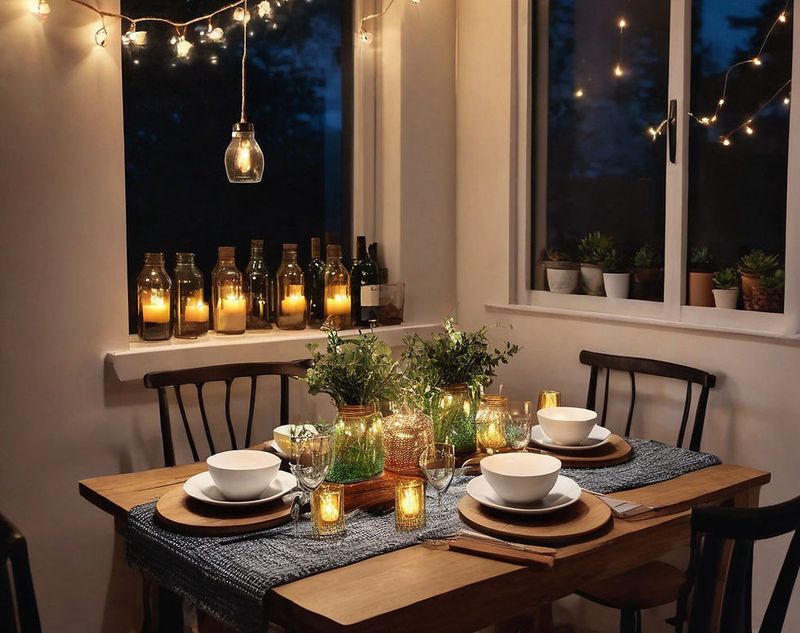
Sometimes the simplest solutions are the most effective. Candles provide the warmest, most flattering light possible and instantly make any room feel more intimate and welcoming.
How should you arrange them safely? Group candles of different heights together on coffee tables, mantels, or side tables. Battery-operated LED candles give you the same warm glow without fire hazards. Real candles work best for special occasions, while LED versions can stay on all the time.
17. Use String Lights For Playful Ambiance

String lights aren’t just for college dorms anymore. High-end designers use them to create whimsical, cozy atmospheres that make living rooms feel magical and inviting.
Where can you hang them tastefully? Drape warm white LED strings along bookcases, around windows, or behind furniture for a subtle glow. Choose lights with warm white bulbs rather than colored ones for a more sophisticated look. The key is using them as accent lighting rather than your main light source.
18. Position Reading Lights Behind Seating
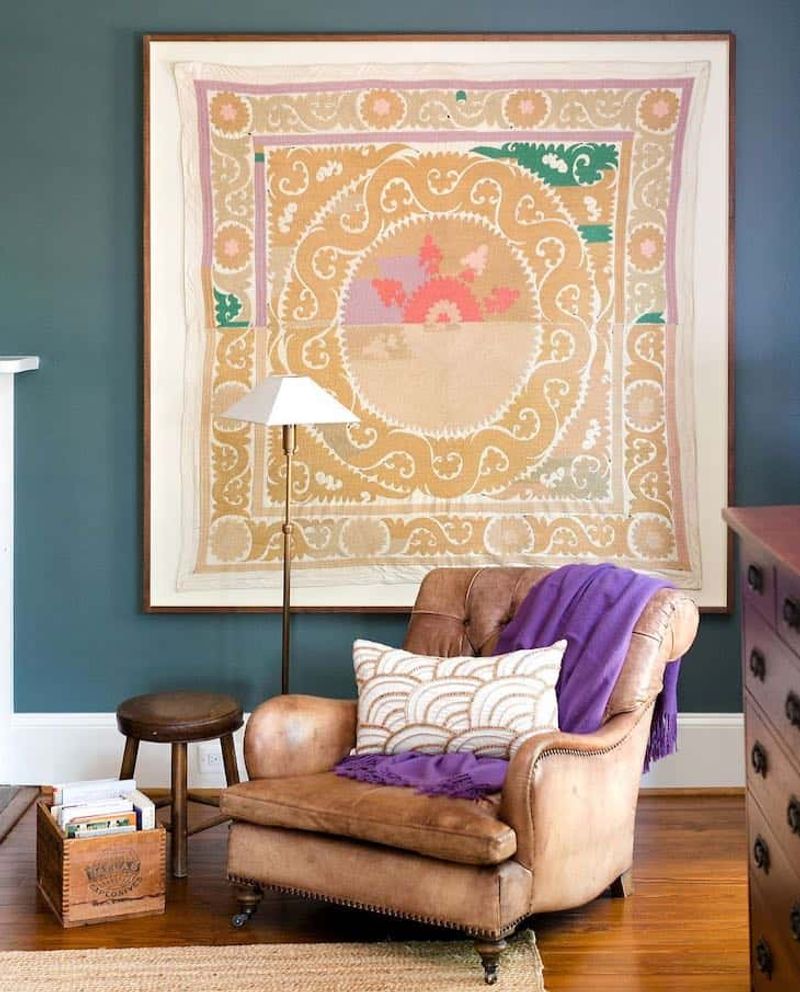
Nothing ruins a good book like poor lighting that creates shadows on the pages. Professional designers always position reading lights behind and slightly above seating areas to eliminate shadows and provide clear illumination.
What type of fixture works best? Adjustable floor lamps with swing arms are perfect because you can direct light exactly where needed. Wall-mounted reading lights work well too, especially in smaller spaces. The light should shine over your shoulder onto your book or tablet without creating glare.
19. Create Focal Points With Accent Lighting
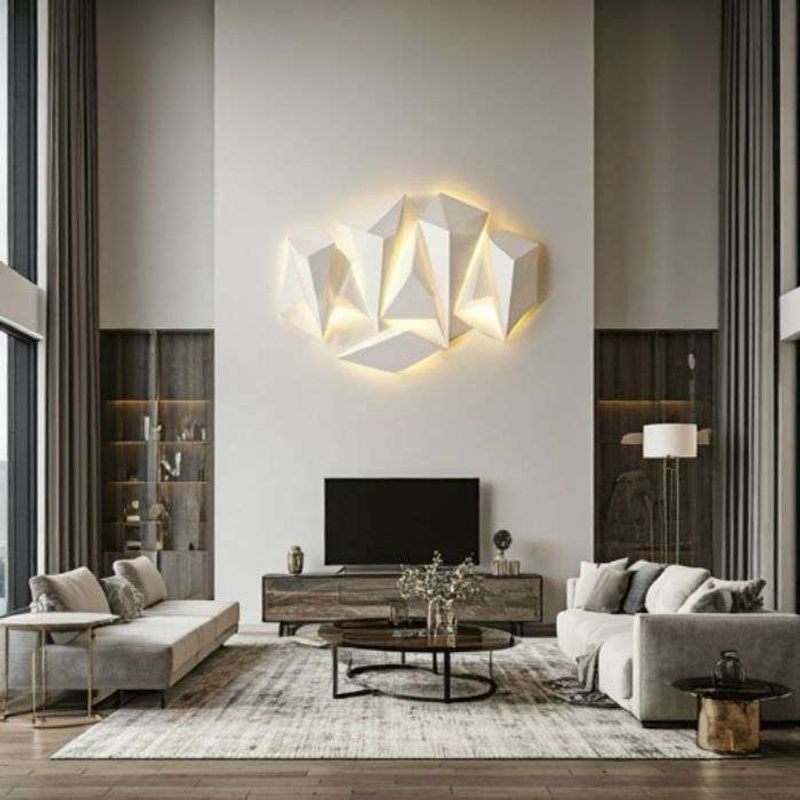
Every well-designed room needs a star, and accent lighting helps create those show-stopping focal points. Whether it’s a beautiful plant, sculpture, or architectural feature, strategic lighting makes it the center of attention.
Which elements deserve the spotlight? Highlight your room’s best features – maybe a stunning fireplace, interesting textured wall, or prized art collection. Use track lighting, picture lights, or even small spotlights to create drama. The goal is making people notice and appreciate your room’s special details.
20. Consider Natural Light When Planning Artificial Sources
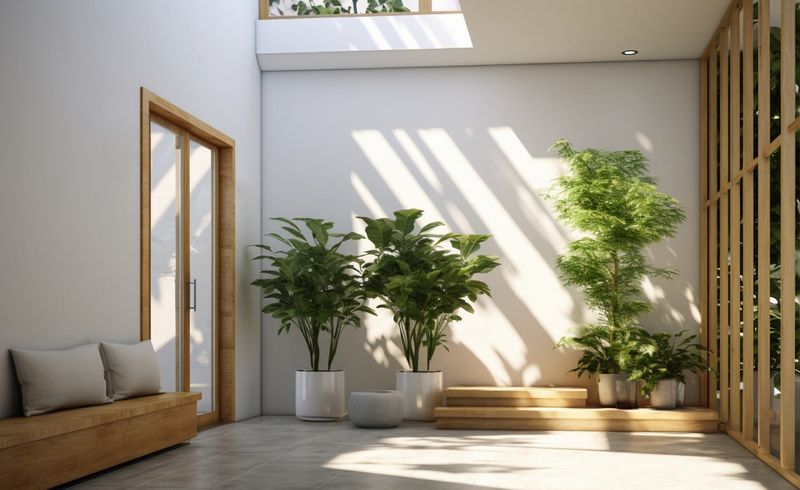
Smart designers never ignore the sun when planning their lighting schemes. Natural light changes throughout the day, so your artificial lighting needs to work with these shifts rather than fighting against them.
How do you coordinate both types? Use brighter artificial lights in areas that don’t get much natural light, and softer accent lighting near windows. Install dimmers so you can adjust artificial lighting as daylight fades. This creates seamless transitions from day to night lighting that feels natural and comfortable.


